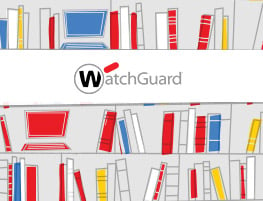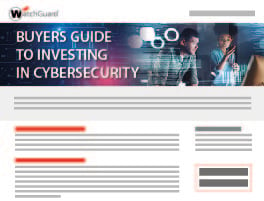Make Security a Priority in Education
No other environment requires more from its IT infrastructure in terms of both performance and security than in education. This industry needs to enable technologies that allow for optimal learning on campus, at school, and online. All this without compromising user information, devices, and systems. The answer: a centralized approach to security that delivers across-the-board and threat-free learning for everyone.
Threat-Free Learning for Everyone

Hybrid Learning
With the current landscape in which schools are operating, where they are enabling learning in-person, virtually, and through personal devices, what are the top cybersecurity risks impacting this sector? Decision-makers in this sector are focusing on investing in modern technologies that allow for a broader teaching and learning experience. This also means that adopting stronger cybersecurity practices is a top priority across the industry.

Security in K-12 Education
Security priorities in this segment are driven by compliance and accreditation. As new technologies and online resources are integrated into learning programs, concerns around student privacy and security naturally arise. Consistent security assessments, content filtering, and monitoring access can help address gaps in security and maintain regulatory compliance.

Security in Higher Ed
Colleges and universities are constantly adopting new technologies to enable smarter campuses and more inclusive learning. This makes information security the most critical element of the IT infrastructure in higher education. The security architecture for this segment requires alignment between network segmentation, optimal wireless environments, protected Cloud-based application, and user identity security.

A Centralized Approach
Managing the IT systems for any educational institution is no small feat. This industry needs security solutions that empower educators to deliver an inclusive learning experience. Access control, asset protection, identity security, and securing endpoints are only a few of the solutions required to enable a reliable learning environment.
82%
of malware attacks target the education sector.
In the US and the UK, ransomware attacks targeting schools have gone up 900% and 140% respectively.
74%
of school districts require or plan to require cybersecurity training.
CoSN's EdTech Leadership Survey Report shows that school districts are prioritizing cybersecurity training for their staff and faculty.
$2.3M
Financial loss in a school district in Texas due to a phishing attack.
The Manor Independent School District in Texas lost $2.3 million due to phishing. In almost 90% of these attacks, criminals used Gmail accounts to send phishing emails.
287
Average number of days it takes to deal with a breach.
A 2021 IBM report shows that it takes companies up to 212 days to detect a breach and an additional 75 days to contain it.









